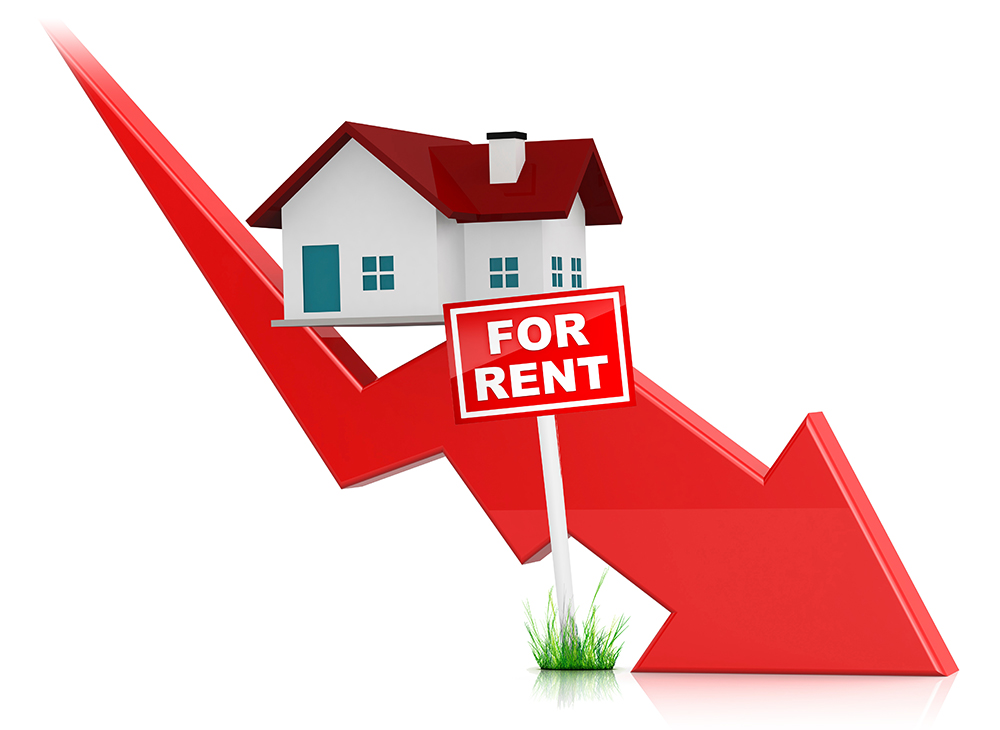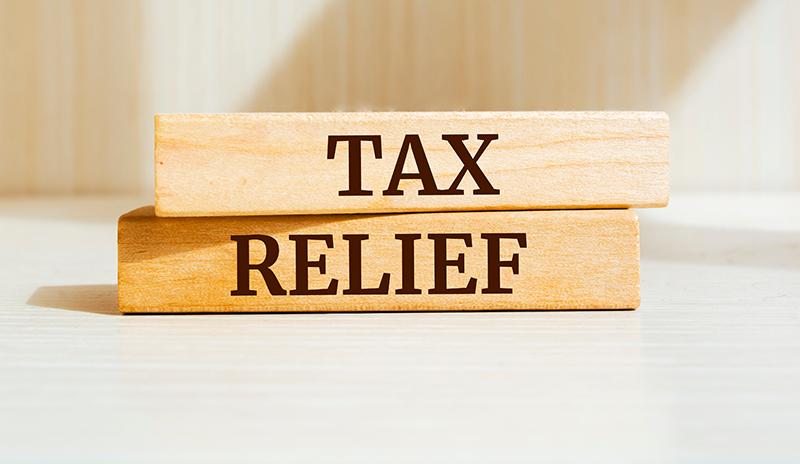Can I Deduct Rental Property Losses?
July, 14 2022 by Carolyn Richardson, EA, MBA
Investing in a rental property can be a smart move for your financial future, regardless of whether you invest in a single-family home, apartment building, or commercial property. In addition to the income that a rental can provide during your retirement years, it is also a good way to diversify your money outside of stock market-based investments, which most IRAs and 401(k) plans are invested in. Purchasing a rental property may be out of the reach of many taxpayers, particularly in the current housing market in most of the country, but for those who can manage it, the financial rewards can be worth the effort.
That being said, a rental property investment isn’t likely to return huge rewards for you on your income taxes. If the property is turning a profit, that income is taxed as regular income; therefore, the taxes will be calculated at your marginal tax rate. If the property is incurring losses, those losses may be limited based on other income you receive.
Rental Losses are Limited
 Since 1986, the tax law has limited rental losses for taxpayers whose income goes over a certain threshold and for higher-income taxpayers, no losses may be allowed at all in the year they are incurred. This is because rental income (and losses) are considered to be “passive” investment activities. In other words, taxpayers generally do not need to do much to earn this income after their initial investment of purchasing the rental property. Because most income from rental properties is considered a passive income stream, passive losses in excess of passive income generally cannot offset “active” income, such as that earned from wages or self-employment. However, unallowed passive losses may be carried over to future tax years and offset subsequent passive income.
Since 1986, the tax law has limited rental losses for taxpayers whose income goes over a certain threshold and for higher-income taxpayers, no losses may be allowed at all in the year they are incurred. This is because rental income (and losses) are considered to be “passive” investment activities. In other words, taxpayers generally do not need to do much to earn this income after their initial investment of purchasing the rental property. Because most income from rental properties is considered a passive income stream, passive losses in excess of passive income generally cannot offset “active” income, such as that earned from wages or self-employment. However, unallowed passive losses may be carried over to future tax years and offset subsequent passive income.
A special loss allowance is available to taxpayers with passive rental properties. A taxpayer whose rental property incurred a loss can claim up to $25,000 in losses in one year if their modified adjusted gross income before the loss is under $100,000. But for every $2 over that limit, the allowable rental loss is reduced by $1. In other words, the loss is reduced by 50% of the amount that the income goes over the lower income threshold. When your income before the rental loss reaches $150,000, the special loss allowance will be reduced to $0.
Example: Charles is a single taxpayer with salary income of $130,000. Charles also owns a single- family home that he rents out, and the 2022 rental loss was $25,000. Charles’ allowable rental loss for 2022 will be $10,000 ($130,000 AGI - $100,000 threshold = $30,000, $30,000 * 50% = $15,000 reduction, $25,000 - $15,000 = $10,000 allowable loss).
If you are married filing separately, the loss cannot exceed $12,500, and the dollar limits to calculate the allowable loss are cut in half (starting at $50,000 and eliminated at $75,000). This special allowance of up to $25,000 in losses is only allowed to taxpayers who actively participate in the management of their rental property. Performing certain activities such as approving tenants, deciding on rental terms, approving or performing needed repairs, and similar decisions will qualify as active participation.
Unfortunately, the dollar limitations are not indexed to inflation, and they remain at their original amounts (which were set in 1986) to this day. In the nearly 40 years rental real estate was declared passive income, wages have increased for nearly all taxpayers, pushing many taxpayers into the phase-out thresholds. And the reality is that most rental real estate properties, at least in the initial years after purchase, generate losses due to the higher mortgage interest payments and depreciation incurred on the property.
It should also be noted that this special allowance only applies to rental real estate activities that are separate from the taxpayer’s own home. Different rules are applied if the taxpayer is renting a room to a roommate, boarder, or other shared living arrangements. Generally, the taxpayer may take expenses up to the amount of rental income, but no losses can be generated (this is referred to as a “mixed-use” property).
Other Limitations on Losses
To claim any rental real estate loss, even a limited one, there are some other limits that can come into play. For starters, the special allowance can only be used by individual taxpayers and, in some cases, a taxpayer’s estate. It can be used if the property is held in a single-member limited liability company, as this type of business entity is disregarded for tax purposes. All other types of entities, such as multi-member LLCs, S corporations, or partnerships, cannot use this special loss allowance.
In order to claim the loss at all, the taxpayer (and/or spouse) must own at least 10% by value of the total rental activities. So Charles, in our previous example, can claim his losses because he owns 100% of the property. But if Charles owned the rental with his 10 siblings and owned only 5% of the property interest, he cannot claim the special allowance. No loss is allowable if the property is owned through a limited partnership.
And finally, the taxpayer (and/or their spouse) must “actively” participate in the rental activity, as mentioned previously. If you allow another person to make all the decisions regarding your rental property and do not participate in the day-to-day management, then you may not claim any losses. This may happen, for example, where you co-own a property with another taxpayer, and that person is the person who manages the property. However, hiring a management company to manage the property for you won’t necessarily disqualify you from active participation, as the management company will generally leave final decisions to the owner.
If a taxpayer is unable to claim their rental losses in the year they are incurred, the loss is carried forward indefinitely until the taxpayer has net income from either the rental property itself or other passive activities that they own. The losses can be used to reduce future income from other passive activities. When the rental property is sold, regardless of whether it is sold at a gain or loss, any losses that still remain can be claimed in full. The losses for a rental activity are tracked on Form 8582, Passive Activity Loss Limitations.
Avoiding the Limits – The Real Estate Professional Exception
You may be asking yourself if there is a way to avoid having your rental property losses limited under these rules. Congress did recognize that some taxpayers make their living from their rental properties and thus was born the “Real Estate Professional” exception to the loss limitations. Taxpayers who are considered to be Real Estate Professionals (RE Pro) can claim their losses without the limits above applying. But before we (briefly) discuss this designation, please be warned that this area of tax law is very complicated, easy to get wrong, and highly likely to generate an audit.
So how does one become an RE Pro? Well, first of all, simply having a real estate agent’s license does not make you a RE Pro. To be a Real Estate Professional for purposes of deducting unlimited rental losses, the taxpayer must be working in a genuine, bona fide way in real estate professions, either through their own rentals and businesses or through employment in certain trades (if the taxpayer owns at least 5% of the business).
There is a two-prong test to determine if a taxpayer is making their living in real estate:
- More than half of the professional services performed by the taxpayer in all trades or businesses must be in real property trades in which the taxpayer “materially” participates (real property trades include development, construction, acquisition, conversion, rental, operation or management, or brokerage of real property).
- The taxpayer must perform more than 750 hours of services during the tax year in real property trades or businesses in which they materially participate.
There are five tests to determine if you have materially participated, with some of the tests requiring as little as 100 hours of service during the year. However, generally, you must spend at least 500 participation hours per activity (i.e., per rental activity) to be considered materially participating. An in-depth discussion of these rules is beyond the scope of this blog. Real estate professionals who own more than one rental property can elect to treat their combined rentals as a single entity to meet the material participation rules, but this election can have adverse tax effects and should not be done without a thorough understanding of the impact it can have. Also, some types of rental properties may be very difficult to show material participation, such as triple-net arrangements.
Most taxpayers who own just one or two rental properties and who work full-time (or even part-time) in non-real estate professions will not be able to overcome the bar set by these two tests. A full-time job is normally around 2,000 hours per year; thus, the taxpayer would need to work over 2,000 hours in real property trades or businesses to meet the first test. Generally, rental properties do not require a huge amount of time on the owner’s part, so showing that you spent more than 750 hours is difficult unless you keep a log of how you spent your time in relation to your rental. The log must document when you performed services in your real property trades or business (including your rental properties), including the date, the amount of time spent on the activity, and what activity was performed. Also, investor-type activities do not count toward the 750-hour test. Taxpayers who hire management companies to perform some of the management of their rentals will be automatically disqualified from RE Pro status in an audit by the IRS.
Keep in mind that since this is an hours-based test, you may qualify one year but not another. As stated previously, an in-depth discussion of this exception is beyond this blog’s intent. If you think you might qualify, you should consult with a qualified tax professional.
In conclusion, rental properties can be a great investment, particularly in a rising real estate market where your equity can grow quickly. They also can help diversify your investment portfolio and provide income in your retirement years. But if you are purchasing one thinking you will get a huge tax write-off, you may want to rethink your investment goals.





